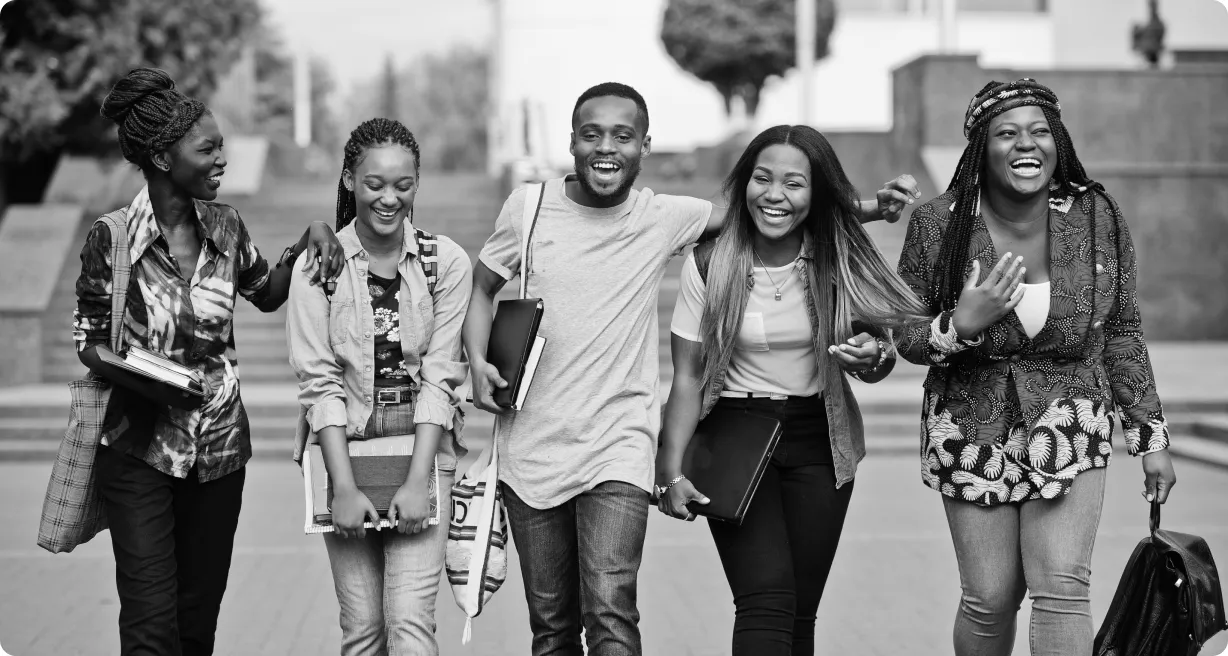
Problem 1:
Book Bans
Issue:
Book bans in the United States are increasingly targeting materials that address themes of race, gender identity, and sexual orientation, particularly in school libraries and classrooms. These bans distort the historical and social narratives accessible to students.
Impact:
These bans profoundly affect underserved youth, including BIPOC, queer, trans, and indigenous students, for whom these books provide critical reflections of their own experiences and histories. In the 2022-23 school year, PEN America tracked 3,362 instances of book bans, a 33% increase from the previous year, affecting at least 1,557 unique titles. Limiting access to these stories censors educational content and denies these young people the opportunity to see their identities and experiences validated in literature. This can negatively impact their personal identity development and sense of belonging.
Solution:
Baldwin Institute combats book bans by advocating for the inclusion of diverse educational content in school curricula and libraries. By promoting and providing access to books that reflect diverse identities and experiences, the Institute ensures that all students can see their realities validated and explored in educational settings.
Problem 2:
Post-Pandemic Literacy Challenges
Issue:
The COVID-19 pandemic caused significant educational disruptions, particularly affecting students from lower socioeconomic backgrounds and underserved communities, many of whom are BIPOC. These students faced challenges such as lack of access to digital learning tools and stable internet, exacerbating existing educational inequalities and contributing to a decline in literacy rates.
Impact:
The rise in book bans further limits the availability of diverse educational content, which is particularly detrimental in a post-pandemic learning environment. According to the Annie E. Casey Foundation, only 26% of eighth graders were proficient in math in 2022, down from 33% in 2019, and less than a third of fourth graders were proficient in reading, down from 34% in 2019 (The Annie E. Casey Foundation) (The Annie E. Casey Foundation ) ( The Annie E. Casey Foundation). Students from minority and marginalized communities may feel increasingly alienated from an education system that does not reflect their experiences or value their histories, potentially leading to lower academic engagement and performance.
Solution:
Baldwin Institute addresses post-pandemic literacy challenges by providing resources and support to underserved communities. Through initiatives that enhance digital access and promote diverse literature, the Institute helps bridge educational gaps and fosters an inclusive learning environment where all students can thrive.
Problem 3:
Career Pathways for Underserved Youth in Arts and Humanities
Issue:
There are systemic barriers that hinder opportunities and professional pathways for underserved youth interested in the arts and humanities. These include underrepresentation, economic challenges, educational disparities, systemic bias, and lack of cultural and social support.
Impact:
These barriers lead to underrepresentation and limited career success for individuals from these backgrounds. Humanities majors face higher unemployment rates compared to STEM graduates, with 12.1% of recent Fine Arts graduates being unemployed as of February 2023 ( Big Economics). Underserved youth may feel discouraged from pursuing careers in the arts and humanities due to the lack of role models, economic uncertainties, and cultural pressures to prioritize more conventional and financially secure career paths.
Solution:
Baldwin Institute works to dismantle these barriers by enhancing the visibility of professionals from similar backgrounds in the arts, increasing funding and resources for arts education in underserved communities, providing scholarships and financial support for aspiring artists and scholars, and actively working to dismantle systemic biases within institutions. By fostering a more diverse and inclusive cultural landscape, the Institute creates equitable and accessible pathways for underserved youth in the arts and humanities.
Problem 4:
Lack of Funding for Youth Arts and Humanities Education and Programs
Issue:
Arts and humanities programs often face significant funding challenges, leading to cuts in school curricula and community initiatives. This lack of funding undermines the development of critical thinking skills and diminishes the social, political, and cultural development of society.
Impact:
Without robust arts and humanities education, students miss out on opportunities to develop essential critical thinking skills, creativity, and cultural awareness. According to the National Center for Education Statistics, schools in low-income areas receive significantly less funding per student compared to those in affluent areas, with schools in the highest poverty quartile receiving about $1,000 less per student (The Annie E. Casey Foundation). These programs are crucial for fostering informed, engaged citizens who can navigate and address complex social and political issues. The next generation faces unique challenges that require innovative and creative solutions, which are often cultivated through arts and humanities education.
Solution:
Baldwin Institute advocates for increased funding and support for arts and humanities programs. By highlighting the importance of these disciplines in developing critical thinking skills and addressing societal challenges, the Institute works to secure resources for educational and community initiatives. Through partnerships, grants, and community engagement, the Institute promotes the value of arts and humanities education for the holistic development of future generations.